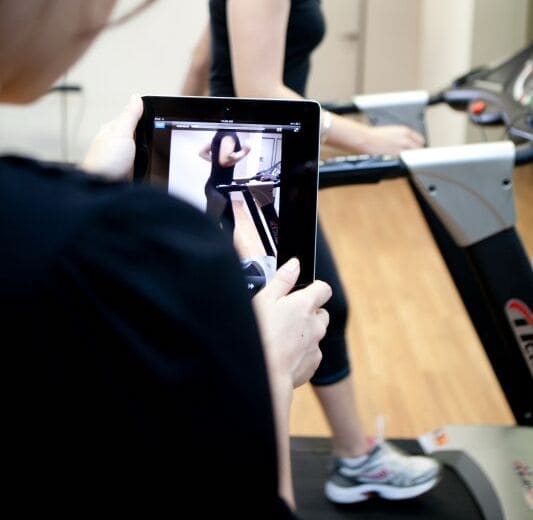What is podiatry?
Podiatry is an allied health practice that is dedicated to the diagnosis, treatment and health of the foot, ankle, and lower limb. Podiatry is not limited to musculoskeletal problems in the body; in other words, we are also able to treat skin and nail pathologies of the feet, and assist in managing diabetes and lower limb complications.
We can assist in relieving a variety of pain points, including biomechanical problems, chronic injuries and conditions affecting the nails and skin. Our podiatrists can also provide support for older people and people with a disability, through ongoing monitoring of mobility and foot health. This includes managing sports injuries, as well as providing footwear advice tailored to your sporting activities.


How can a podiatrist support me?
It is easy to take feet and ankles for granted until things go awry. Pain and other complications in these areas can be debilitating. Often, the problems aren’t isolated either.
Many issues of the foot can impact upon our health, happiness, satisfaction, and mental wellbeing. An issue of the foot can inhibit our lives in the workplace and wider social environments, in more ways than one. However, when podiatry is used to treat injury or pain it can result in:
Greater mobility and flexibility.
- Improved muscle activation.
- Improved running or athletic performance.
- Alleviation of pain and tension.
- Prevention of future problems and injury.
Our approach to podiatry.
Podiatry can benefit everyone: from those with mobility concerns and challenges, to high-performing athletes. We consider your footwear, occupation, work, and lifestyle to diagnose the health of your feet and lower limbs.
As each injury and issue will vary per individual, our tailored approach ensures your treatment aligns with your fitness and lifestyle goals. Management of foot pain may involve manual therapy, the use of instruments, tools, shoe inserts or orthotics.
We will guide you in choosing the correct footwear or running shoes to suit your lifestyle and feet. You will also receive specific self-care practices and exercise techniques to support self-management and prevent future injury.
After an initial assessment and consultation, our trained podiatrists can determine where podiatry sits in your individual treatment plan during rehabilitation and recovery.
We use the latest technology for assessment, diagnosis, and education. We draw upon well-established research and engage in evidence-based practice to provide the highest level of diagnostic skill. The result is an individualised treatment plan that meets your specific personal needs to get you back on your feet, faster.
We work in partnership with Pride Podiatry to ensure that our approach is thorough. We’re comprehensive in our search for underlying causes or complaints, and we work hard to restore your feet to optimal health. It’s all about getting you back to normal life and back into the physicality of your regular routine.
Interested in an assessment?


What is a biomechanical assessment?
Biomechanical assessments are a fundamental part of our process. They provide us with the information we need to determine the next steps towards the recovery of your foot, heel, or ankle.
A biomechanical assessment involves a series of tests related to strength, flexibility, control, and endurance. We use the latest technology, such as slow-motion video capture, to provide a thorough diagnosis of your condition.
How can orthotics support my recovery?
Following a biomechanical assessment, we can determine the most appropriate orthotic to support you in your recovery. We have three orthotic offerings: custom, semi-custom and prefabricated.
Orthotics are tailored to your needs, to ensure you are receiving support where you need it most. This process involves taking a 3D scan of your foot and crafting your orthotics to mimic your exact foot mechanics. Once designed, your orthotics are printed by a 3D printer here in Melbourne.

Common foot conditions
Podiatry focuses on the foot and ankle. This includes treatment of muscle injuries, tendon injuries, joint sprains, osteoarthritis, or overuse conditions. Some commonly seen conditions include:
- Heel pain or injury (e.g. plantar fasciitis)
- Ankle pain and knee pain
- Painful corns or callouses
- Ingrown toe nails
- Forefoot pain or injury
- Arch pain
- Bunion pain (e.g. hallux abductovalgus)
- Osteoarthritis of the foot or ankle
We also facilitate assessments for athletes and people engaging in sport. This includes the assessment and tailored treatment of strains and injuries stemming from sporting accidents or overuse.
We may also design a management plan tailored to your sporting activities to prevent future injuries. This often leads to improved efficiency and can enhance your performance in resuming your sporting activities.

